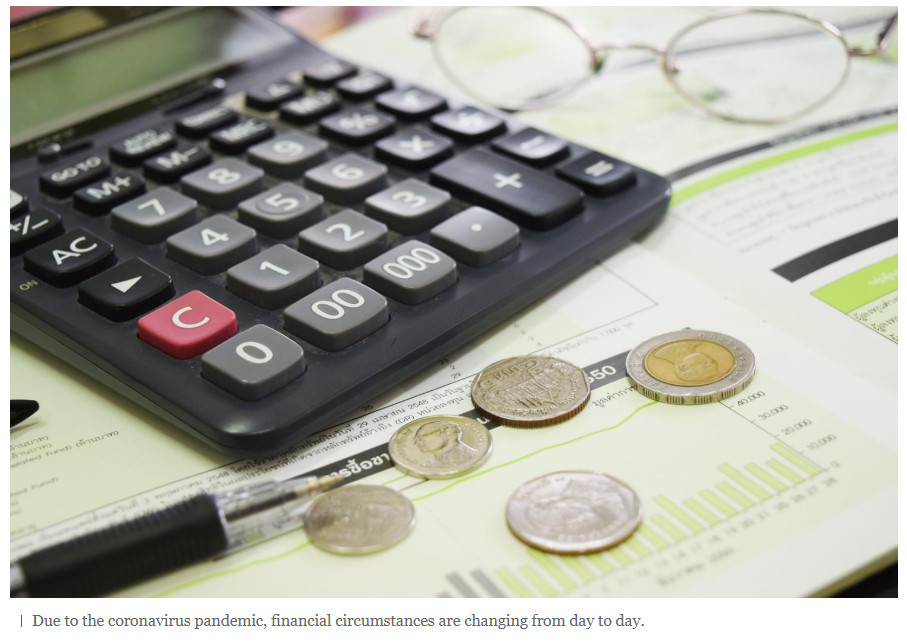Thailand: Cash is king: back to basics
While the Covid-19 situation is unprecedented, experience from past economic disruptions, such as the 2008 financial crisis, provides some insight into what is likely to happen to businesses in terms of cash flow. However, the impact is not uniform.
How can you protect the cash flow of your business?
1. Tax payment: Tax payments are one of the biggest sources of cash flow for any business. Significant cash flow-positive results can be created in a variety of ways. Some of the most well-known are R&D tax credits, VAT planning, payroll or benefits planning, time-to-pay arrangements, quarterly instalment payments, and crediting tax losses from a fall in asset values.
2. New risks and risk management: Businesses will be dealing with new areas of risk and risk management, which means that their structures may need to be adapted, debt restructured, investment plans altered, or supply chains modified. All of these issues will naturally have a significant tax impact.
3. Positioning for the future: In any economic disruption, once immediate steps have been taken to protect the business and to cover risk, there are generally opportunities to prepare or improve the business for the aftermath of the crisis.
For example, a fall in share prices will mean stock options or other incentives have lost their incentivising effect. They can be reset to retain and incentivise key staff at no cash cost, and, in some cases, a tax deduction as well.
Supply chains may need to be changed or rebuilt, or there may be opportunities to accelerate business transformations that were already under way.
On a personal level, falls in the value of assets may provide an opportunity to pass assets down to the younger generation.
M&A TRANSACTIONS
The difficulty in defining the value of a business in a highly uncertain time such as the present can lead to the determination of a price being governed by other criteria. These could include the need to buy or sell, strategic aspects, or a gain in market share. In some cases, decisions concerning investments all simply be delayed or cancelled. Going forward, here are some issues to consider:
1. Generation of cash flow: As in any financial crisis, the impact is going to vary by business sector, as well as each company’s characteristics. These could include the degree of previous indebtedness, geographical diversification, client or supplier dependency, size and cost flexibility.
However, in the current situation, other variables outside of the company structure itself may have a significant effect on crisis recovery, mainly access to new financing (equity and/or debt) and the effective deployment of policies (tax, labour, etc) by central banks and governments in response to the crisis.
In our opinion, the fundamental variable that determines the ability to generate cash flow and, therefore, to create value, is time. How long can companies and businesses hold out under current conditions? More importantly, what condition will they be in once all of this is over?
2. Variable growth: In valuation, this refers to the expected growth of generated cash flow. The higher the expected growth, the higher the expected value.
Data on retail consumption in China at the peak of the Covid-19 crisis shows that it dropped by 20% in February, after annual growth of over 8% in recent years. This is alarming data that will inevitably be seen in Europe and other regions as well.
Just as worrying is the halt in investment in China. The saver, the investor with resources, and companies themselves prefer to wait until there is greater clarity. They are keeping their funds in reserve or allocating them to assets that have no related risk.
3. Risk: Lastly, we have variable risk, understood as uncertainty, volatility or variability expected in the cash flow generated. In valuation, we reflect this concept through the rate of discount or the valuation multiple. The higher the risk, the lower the value or multiple.
In the current situation, industries such as those related to tourism, travel and oil, tend to be placed in the same basket of high-risk sectors, at least occasionally. Other, more recent ones, such as online sales, remote telecommunication systems, online courses, or well-established ones such as supermarkets or general food industries, have a low risk profile.
IMPACT ON VALUATION
Uncertainty regarding the duration and extent of the pandemic means the long-term effects remain unknown. But there are several factors to be considered in business valuation.
1. Date of valuation:. The value of a business is based on what is known as of the valuation date. Due to the Covid-19 outbreak, circumstances are changing from day to day. Therefore, the situation that exists as of the valuation date should be assessed carefully.
2. Cost of equity: Consideration of whether a “risk-free rate” is indeed risk-free involves assessing whether the rate is default-free. The financial health of a business is a critical considerations when building up a discount rate.
3. Double-counting risk: The basis on which cash flow projections are prepared should be matched with the basis on which the corresponding discount rate is determined. Business-related risk factors should be carefully incorporated into cash flow projections and/or the discount rate, ensuring that no double-counting of risks takes place.
4. Discount for lack of marketability (DLOM): Extreme volatility of the market may signal a higher DLOM. Although there is insufficient empirical data to quantify the increase in DLOMs due to the pandemic, a justifiable approach to considering its impact should be taken.
5. Government support and incentives: Some affected businesses affected by the pandemic may be eligible for aid. The impact of such support or incentives should be thoroughly assessed and considered in a valuation.
Source: https://www.bangkokpost.com/business/1911484/cash-is-king-back-to-basics


 English
English




